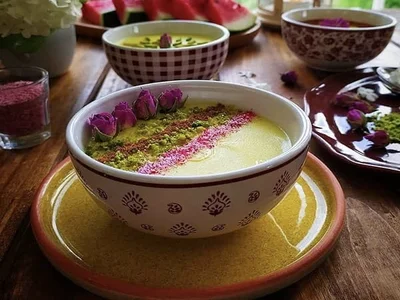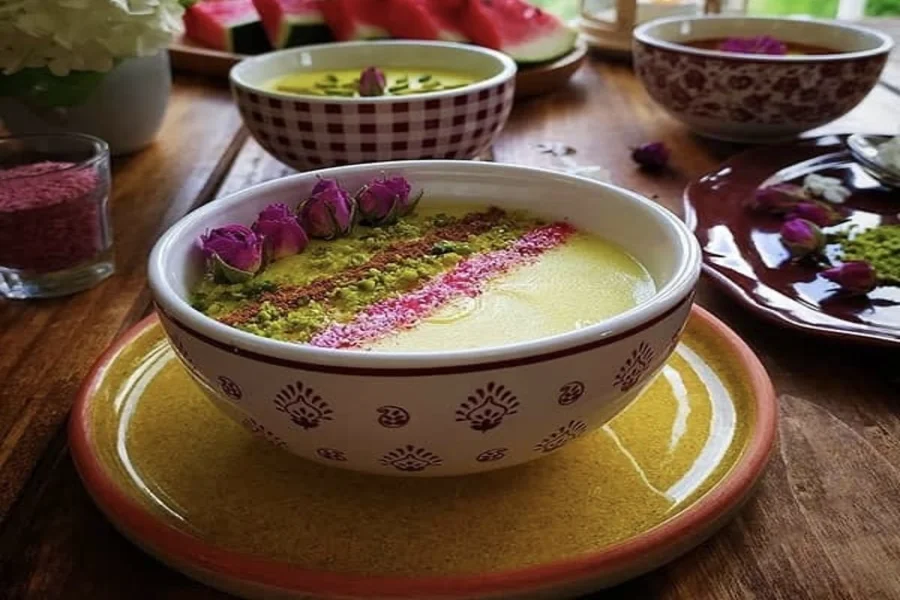
11 Must-Try Street Foods in Iran
One of the most delightful adventures in Iran is strolling through the streets of any city. This journey caters to both your stomach and your soul. For your stomach, it means indulging in mouth-watering street food, and for your soul, it means discovering unforgettable tastes and flavors.
These culinary delights aren’t found in restaurants—they are street foods and snacks, incredibly delicious and authentic. The street food available may vary depending on the season of your visit.
Let’s explore the most popular street foods and snacks in Iran, many of which are likely to be quite healthy.
1. Ash Reshteh – The Crown Jewel of Iranian Street Food in Winter
Ash Reshteh is available year-round, particularly in Isfahan, but it truly shines as a winter street food. This hearty soup, made with various vegetables, beans, chickpeas, and noodles (Reshteh), is especially comforting in cold weather. It’s traditionally served with Kashk, a salty whey product that gives Ash its distinctive flavor, along with fried garlic, onion, and mint sprinkled on top.
Ash is a dish deeply rooted in Iranian tradition, prepared for various occasions beyond just mealtime. For instance, there’s Ash-e Posht-e Pa. When a family member embarks on a journey, especially a holy one or military service, family and friends gather to bid farewell and support the immediate family left behind. After the departure, they make Ash, share it together, and distribute the remainder to neighbors. This tradition symbolizes the hope for a swift and safe return of their loved one.
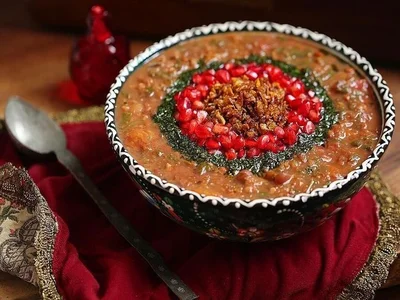
2. Falafel – Iran’s Most Beloved Street Food
Falafel, a cherished vegetarian street food in Iran, is primarily made from chickpeas. These are formed into balls or flat patties about the size of a ping pong ball. Typically, when people mention falafel, they’re referring to a sandwich. This sandwich features several falafel patties nestled on a bed of pickled veggies, lettuce, cabbage, and other toppings, all enhanced with various sauces. Originally from southern Iran, falafel has gained popularity nationwide due to its delicious taste, quick preparation, and affordability. However, the closer you get to southern Iran, the spicier the falafel becomes. So, depending on where you enjoy it, the level of spiciness may vary.
In Iran, falafel is typically wrapped in baguette bread on the streets. However, some places use traditional local bread for their sandwiches. Additionally, there are self-service spots where you can customize your own falafel sandwich. These places provide bread, falafel balls, vegetables, pickles, and a variety of sauces for you to choose from and wrap your sandwich just the way you like it.

3. Samboseh – Bite-sized Delight
Samboseh, or Samosa, is another popular Iranian street food originally from the south. It consists of a mixture of cooked potatoes, onions, meat or chicken, and various cooked vegetables with spices, all wrapped in Lavash bread in a triangle shape and deep-fried. The filling can vary, and some versions are entirely vegetarian without meat or chicken. It’s a tasty option to tide you over for an hour or two before a meal.

4. Jigar – Available at Jigaraki Shops
Jigar is a decidedly non-vegetarian street food in Iran. It consists of sheep or cow liver, chopped into pieces, seasoned with spices, skewered on aluminum sticks, and grilled over hot charcoal. Despite how it might sound to some, Jigar has many fans in Iran, with many people enjoying more than three sticks. In Jigaraki shops, you can also find Del (heart) Kebab and Gholveh (kidney) Kebab. Interestingly, “Del,” “Gholveh,” and “Jigar” are common slang terms in Farsi, used to express affection and friendliness among close friends or to refer to cute kids. So, how about a visit to a Jigaraki, Jigar?
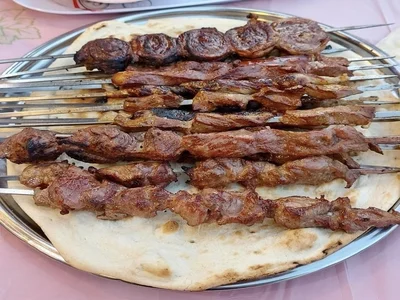
5. Balal – Delicious Iranian Street Corn
This Iranian street food may not fill you up, but it’s a tasty and healthy snack perfect for munching on while exploring. In the evenings, especially in parks or popular city spots, you’ll likely spot vendors grilling corn over charcoal. Once grilled, the corn is dipped into a bucket of saltwater, creating a delicious treat you won’t want to miss. Just be prepared to need a toothpick afterward!
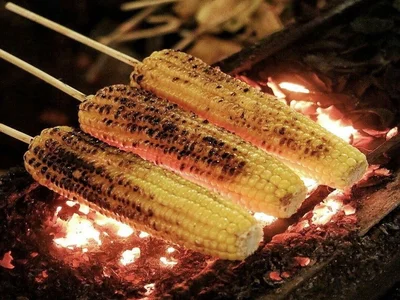
6. Baghali – Seasoned with Red Sumac and Angelica Seeds
Baghali, especially when seasoned with sumac and angelica seeds, offers a unique and delightful taste as a street food in Iran. Sold in small bowls, it can be eaten with or without the peel. Peeling them can be a bit tricky, but it adds to the fun, especially if you’re sharing. The better you get at peeling, the more you can enjoy. Here’s how: use your front teeth to peel off the head or bottom of the fava bean, then squeeze the other end with your fingers and suck the soft, fleshy bean out of its peel.
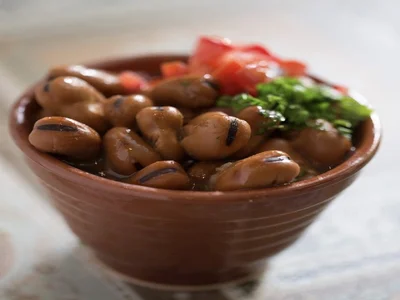
7. Labou – An Iranian Street Food as Red as Blood
Labou, the vibrant red street food known as beetroot, is a nutritious treat in Iran. Rich in iron, this healthful snack is perfect for cold winter days and nights, warming you up while providing essential nutrients. Often, you’ll find Labou sold alongside Baghali, making for a delicious and wholesome street food duo.

8. Haleem – A Delightful, Cinnamon-Infused Treat
In big cities, Haleem is available all day, but traditionally, it is enjoyed as an early morning street food in Iran. It’s a common tradition for Iranian families to have Haleem for breakfast occasionally. Typically, the father heads out early to buy some while the mother wakes the children, and the family enjoys it together at home. This tradition is also true for Kale-Pache. Haleem is made from wheat, meat, and sometimes milk, with ingredients varying by region. Some people prefer it sweetened with sugar, while others opt for salt. The choice is yours. The cinnamon in and on top of Haleem adds a heavenly aroma, making this delicious street food a perfect start to your day, even if you’re enjoying it at home.
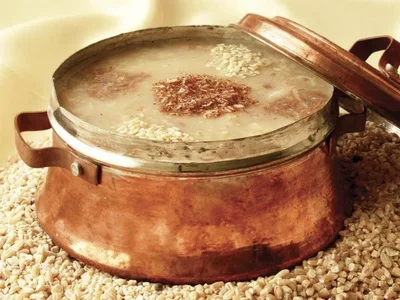
9. Shawarma – A Taste of the Middle East
One foreign street food you can find in Iran is Shawarma. Similar to Falafel wrapped in traditional local bread, Shawarma features different ingredients. Instead of Falafel balls, it uses lamb or chicken, combined with lettuce, carrot, basil, and sometimes mushrooms. The meat or chicken is stacked and roasted, much like in Turkish sandwiches. This delicious dish has its roots in the Middle East.
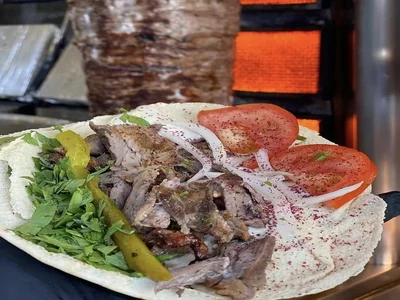
10. Adasi – The Brown Delight
Adasi is a comforting dish made from cooked lentils, a warm treat for chilly fingers and hungry stomachs alike. This Iranian street food combines lentils, onion, potato, and spices, creating a delicious and nutritious vegetarian option that’s rich in iron. Some grandmas even add meat when making it at home. Enjoy it with a squeeze of lime juice and a drizzle of olive oil for added flavor.
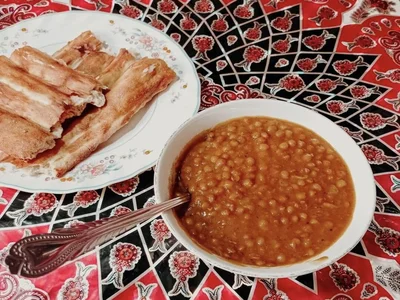
11. Ferni – Iran’s Take on Indian Kheer
The final street food in Iran we’re discussing is Ferni. Made from milk, sugar, and starch or rice flour, these ingredients come together to create a flavor unlike anything else. To truly experience it, you might need an Iranian friend skilled in making Ferni to prepare it at home for you. Sometimes, saffron and turmeric are added, giving it a beautiful yellow hue. Cooks may also include butter and rosewater. Ferni, as an Iranian street food, is typically not very sweet, so it’s often served with natural berry syrup or date syrup for added sweetness.
